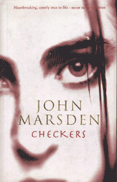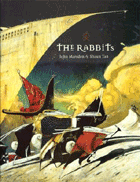John Marsden – July 23 2017
Stress Down Day (Lifeline) – July 24 2017
 John is a teacher, school principal and award winning writer. After dropping out of a double degree in Law and Arts at Sydney University John experienced suicidal thoughts and began seeing a psychiatrist who eventually admitted him to a psychiatric hospital following a diagnosis of depression. He credits his stint in the psychiatric hospital as an important period in his life. At age 28, after working several jobs, John began a teaching course and whilst working as a teacher, began writing for children. His first book, So Much to Tell You, was published in 1987 and a string of huge hits followed, highlighted by the seven book young adult Tomorrow series and subsequent Ellie chronicles. John has now written or edited over 40 books including one recent novel for adults, South of Darkness. In 1998 John bought the Tye Estate, 850 acres of natural bush, on the northern edge of Melbourne, and later added the property next door. For eight years he ran enormously popular writers’ courses and camps at Tye, before starting his alternative school there, Candlebark, in 2006. John is also currently the patron of youth media organisation Express Media.
John is a teacher, school principal and award winning writer. After dropping out of a double degree in Law and Arts at Sydney University John experienced suicidal thoughts and began seeing a psychiatrist who eventually admitted him to a psychiatric hospital following a diagnosis of depression. He credits his stint in the psychiatric hospital as an important period in his life. At age 28, after working several jobs, John began a teaching course and whilst working as a teacher, began writing for children. His first book, So Much to Tell You, was published in 1987 and a string of huge hits followed, highlighted by the seven book young adult Tomorrow series and subsequent Ellie chronicles. John has now written or edited over 40 books including one recent novel for adults, South of Darkness. In 1998 John bought the Tye Estate, 850 acres of natural bush, on the northern edge of Melbourne, and later added the property next door. For eight years he ran enormously popular writers’ courses and camps at Tye, before starting his alternative school there, Candlebark, in 2006. John is also currently the patron of youth media organisation Express Media.
 Checkers
Checkers
Houghton Mifflin, 1996; ISBN 9780732908379
Young adult
The diary of a nameless teenage girl who is a voluntary patient in a psychiatric ward but refuses to talk about why she’s there. After the media hounded her family over her father’s alleged business corruption she was driven further into isolation, during which time her bond with her new pet dog, Checkers, deepened. Ultimately, Checkers is murdered, and the events between that day and her admittance to hospital are never revealed. By the end of the novel, she seems to have resigned herself to being in hospital forever, and continues to blame herself for the death of her beloved dog.
 The Rabbits – Illustrated by Shaun Tan
The Rabbits – Illustrated by Shaun Tan
Lothian, 1998; ISBN 9780734411365
Picture book 0-6
A partly allegorical fable about colonisation, told from the viewpoint of the colonised. An unseen narrator describes the coming of ‘rabbits’ in the most minimal detail, an encounter that is at first friendly and curious, but later darkens as it becomes apparent that the visitors are actually invaders. The style of the book is deliberately sparse and strange, with both text and image conveying an overall sense of bewilderment and anxiety as native numbat-like creatures witness environmental devastation under the wheels of a strange new culture.
